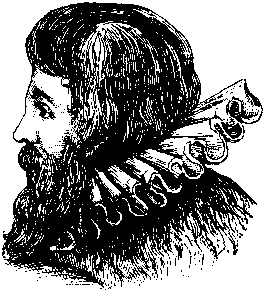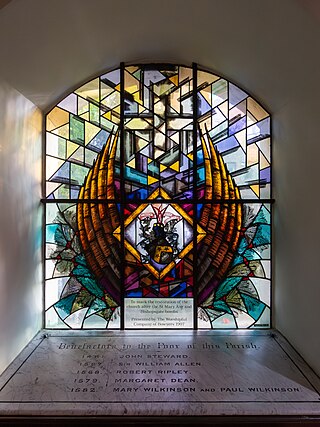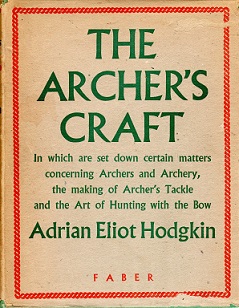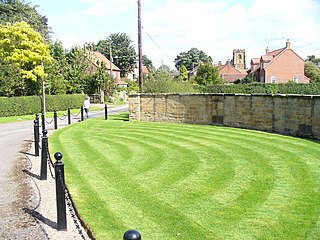
Archery is the sport, practice, or skill of using a bow to shoot arrows. The word comes from the Latin arcus, meaning bow. Historically, archery has been used for hunting and combat. In modern times, it is mainly a competitive sport and recreational activity. A person who practices archery is typically called an archer, bowman, or toxophilite.

The English longbow was a powerful medieval type of bow, about 6 ft (1.8 m) long. While it is debated whether it originated in England or in Wales from the Welsh bow, by the 14th century the longbow was being used by both the English and the Welsh as a weapon of war and for hunting. English longbows were effective against the French during the Hundred Years' War, particularly in the battles of Sluys (1340), Crécy (1346), Poitiers (1356), and Agincourt (1415). They were less successful later on, as longbowmen had their lines broken at the Battle of Verneuil (1424), although the English won a decisive victory there; they were completely routed at the Battle of Patay (1429) when they were charged by the French mounted men-at-arms before they had prepared the terrain and finished defensive arrangements. The Battle of Pontvallain (1370) had also previously shown longbowmen were not particularly effective when not given the time to set up defensive positions.

The bow and arrow is a ranged weapon system consisting of an elastic launching device (bow) and long-shafted projectiles (arrows). Humans used bows and arrows for hunting and aggression long before recorded history, and the practice was common to many prehistoric cultures. They were important weapons of war from ancient history until the early modern period, where they were rendered increasingly obsolete by the development of the more powerful and accurate firearms. Today, bows and arrows are mostly used for hunting and sports.
This article contains information about the literary events and publications of 1548.
This article contains information about the literary events and publications of 1545.

Roger Ascham was an English scholar and didactic writer, famous for his prose style, his promotion of the vernacular, and his theories of education. He served in the administrations of Edward VI, Mary I, and Elizabeth I, having earlier acted as Elizabeth's tutor in Greek and Latin between 1548 and 1550.

Sir John Cheke (or Cheek) (16 June 1514 – 13 September 1557) was an English classical scholar and statesman. One of the foremost teachers of his age, and the first Regius Professor of Greek at the University of Cambridge, he played a great part in the revival of Greek learning in England. He was tutor to Prince Edward, the future King Edward VI, and also sometimes to Princess Elizabeth. Of strongly Reformist sympathy in religious affairs, his public career as provost of King's College, Cambridge, Member of Parliament and briefly as Secretary of State during King Edward's reign was brought to a close by the accession of Queen Mary in 1553. He went into voluntary exile abroad, at first under royal licence (which he overstayed). He was captured and imprisoned in 1556, and recanted his faith to avoid death by burning. He died not long afterward, reportedly regretting his decision.

The Worshipful Company of Bowyers is one of the livery companies of the City of London.

A bracer is a strap or sheath, commonly made of leather, stone or plastic, that covers the ventral (inside) surface of an archer's bow-holding arm. It protects the archer's forearm against injury by accidental whipping from the bowstring or the fletching of the arrow while shooting, and also prevents the loose sleeve from catching the bowstring. They normally only cover part of the forearm, but full-length bracers extending to the upper arm are also available, and other areas have been covered by some archers. In addition, chest guards are sometimes worn, usually by female archers, to protect the breast. With some combinations of non-baggy clothing and bows with a larger distance between the bow and the string, the archer may not need to wear any bracer.

The Archer's Craft by A. E. Hodgkin is a book on the making and use of traditional English and Welsh bows. The book describes how to make both longbows and short hunting bows and arrows. It also describes hunting with the bow and on its history and place in English culture of the yeoman class and royal mandates. It draws inspiration and often quotes from the 16th century Toxophilus written by Roger Ascham.

A longbow is a type of tall bow that makes a fairly long draw possible. A longbow is not significantly recurved. Its limbs are relatively narrow and are circular or D-shaped in cross section. Flatbows can be just as long, but in cross-section, a flatbow has limbs that are approximately rectangular.

Kirby Wiske is an English village and civil parish in the Hambleton District of North Yorkshire. It lies beside the River Wiske, about 4 miles (6.4 km) north-west of Thirsk.

Archery, or the use of bow and arrows, was probably developed in Africa by the later Middle Stone Age. It is documented as part of warfare and hunting from the classical period until the end of the 19th century, when it was made obsolete by the invention and spread of repeating firearms.
Events from the 1510s in England.
Events from the 1540s in England.

John Astley, also seen as Ashley, was an English courtier, Marian exile, and Master of the Jewel Office. He was a Member of Parliament on many occasions.
William Grindal was an English scholar. A dear friend, pupil and protégé of Roger Ascham's at St John's College, Cambridge, he became tutor to Princess Elizabeth, the future Queen Elizabeth, and laid the foundations of her education in the Latin and Greek languages before dying prematurely of the plague in 1548.
"Necessity is the mother of invention" is a proverb. It states that the primary driving force for most new inventions is a need.
John Seton D.D. was an English Roman Catholic priest, known as the author of a standard logic text.
The Woodmen of the Ancient Forest of Arden are an exclusive society of longbow shooting toxophilites, founded in 1758 in the village of Meriden, in the Borough of Solihull, in the ancient Forest of Arden.












